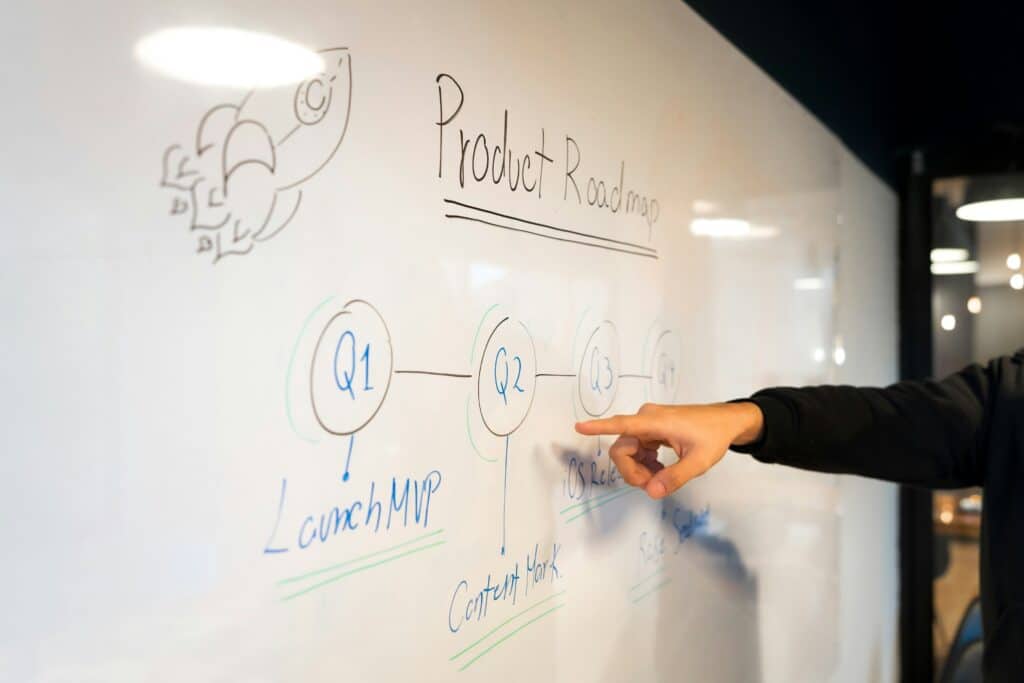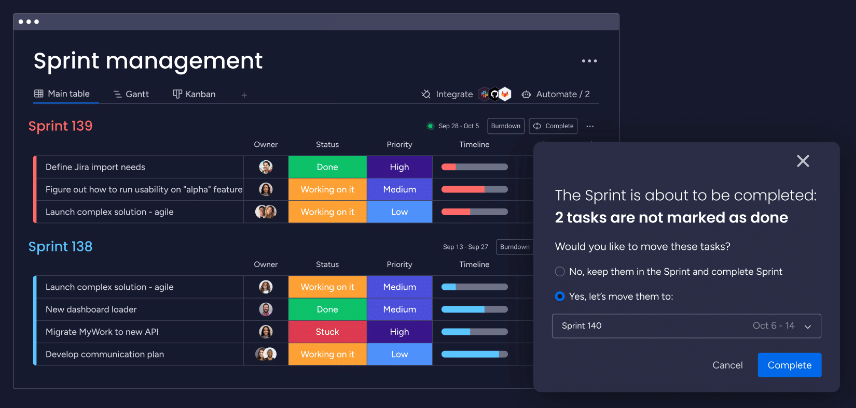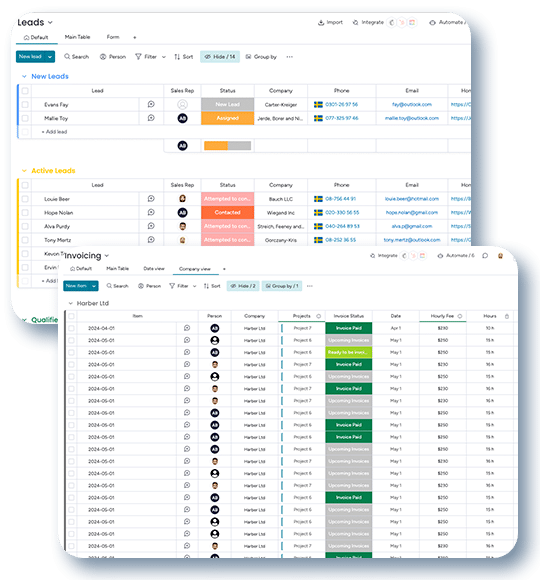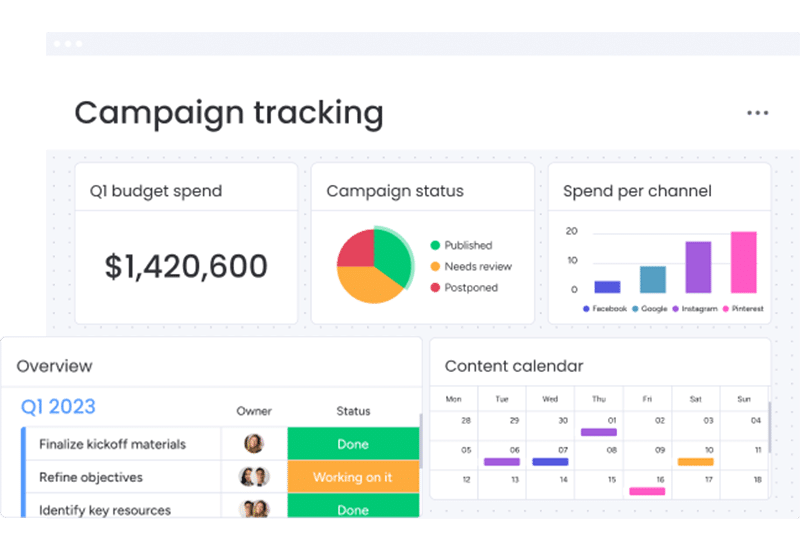Introduction
In the world of project management, few steps are as crucial yet challenging as balancing project scope and resources for optimal efficiency. This balancing act is not just about juggling numbers and timelines. It’s about understanding the heart and soul of a project – its scope – and aligning it with the lifeblood – its resources. Achieving this balance is pivotal for the success of any project, big or small.
Imagine a world where your projects glide seamlessly from conception to completion, with every task and resource perfectly aligned. This is the world where balancing project scope and resources for optimal efficiency isn’t just a goal; it’s a reality. But how do we get there? How do we ensure that our project’s scope – the sum of all tasks, goals, and deliverables – harmonizes with the resources at our disposal, whether it’s time, talent, or technology?
In this blog post, we’ll dive into the strategies and insights that make balancing project scope and resources for optimal efficiency not just a theoretical ideal, but a practical, achievable target. From understanding the dynamic nature of project scope to optimizing resource allocation with cutting-edge tools like monday.com, we’ll explore how to steer your projects toward success and efficiency.
So, buckle up and get ready for a journey into the world of efficient project management. Where balancing project scope and resources for optimal efficiency is the key to unlocking the full potential of your projects.
Understanding the Dynamics of Project Scope
Project scope is a living, breathing entity in the world of project management. Balancing project scope and resources for optimal efficiency starts with a deep understanding of what project scope entails. It’s the blueprint of your project – detailing what needs to be accomplished, the work that must be performed, and the deliverables to be provided. But it’s far from static; project scope can evolve, influenced by external factors, stakeholder inputs, and unforeseen challenges.
Defining Project Scope: The Foundation of Project Management
To excel in balancing project scope and resources for optimal efficiency, one must first define the scope accurately. This definition involves identifying and documenting specific project goals, deliverables, tasks, costs, and deadlines. A well-defined scope acts as a guiding star for resource allocation. It ensures that every effort and investment is directly tied to the project’s objectives. Using tools like monday.com, and complementary monday.com apps like Omnitas Time Reporting Solution, project managers can visually map out the scope. In turn, this makes it easier to see how each element interconnects and affects resource distribution.
The Evolving Nature of Project Scope
One of the critical challenges in balancing project scope and resources for optimal efficiency is the fluid nature of project scope. Changes can arise from various sources, for instance, shifting market trends, customer feedback, or internal strategic realignment. This fluidity requires a flexible approach to resource management. Adapting to scope changes without overstretching resources demands a keen eye and a toolkit equipped with agile methodologies and adaptable software solutions. This enables quick adjustments to workflows and processes.
Omnitas Newsletter
Sign up for our monthly newsletter to stay up-to-date on our latest blog articles, videos and events!
Thank you!
You have successfully joined our subscriber list.
The Role of Resources in Project Management
In the quest for balancing project scope and resources for optimal efficiency, understanding the role of resources is just as crucial as comprehending project scope. Resources in project management are the assets needed to execute the project plan. They range from human resources (teams, individuals) to material resources (software, hardware) and financial resources (budgets, funds). The effective management and allocation of these resources are vital for keeping a project on track and within scope.
Types of Resources and Their Management
Diving deeper into balancing project scope and resources for optimal efficiency necessitates a look at the various types of resources. Human resources involve the skills, expertise, and manpower needed for project tasks. Technological resources include the tools and software that aid in project execution, such as monday.com for project management and Make for workflow automation. Financial resources cover the budgetary aspects, including costs for labour, materials, and technology. Effective management of these resources means ensuring they are used efficiently and judiciously, with a keen eye on the project scope.
Aligning Resources with Project Goals
A cornerstone of balancing project scope and resources for optimal efficiency is aligning resources with project goals. This alignment involves matching the right type and amount of resources with each project task and objective. It requires a strategic approach where resources are allocated based on priority, project phase, and the overall goal. Tools like monday.com, and especially the Time Reporting Solution, can be instrumental in this process. It offers visual and analytical insights into resource allocation and its alignment with project scope.
Overcoming Resource Allocation Challenges
The path to balancing project scope and resources for optimal efficiency is often laden with challenges in resource allocation. These can range from resource shortages and conflicts to misallocation. Overcoming these challenges requires a blend of strategic planning, flexibility, and the right technological tools. Utilizing software like Make can provide the agility to reconfigure workflows and resource assignments dynamically. This ensures that resource allocation remains aligned with the evolving project scope.
Strategies for Balancing Scope and Resources
Achieving a balance between project scope and resources for optimal efficiency is the holy grail of project management. It requires meticulous planning, strategic thinking, and the right tools. This section explores various strategies that can be employed to maintain this delicate balance. Ensuring that your project stays on track, within budget, and is delivered on time.
Prioritization of Tasks and Milestones
A key strategy in balancing project scope and resources for optimal efficiency is the prioritization of tasks and milestones. This involves evaluating the importance and urgency of each task and aligning resources accordingly. Prioritization ensures that critical project elements receive the attention and resources they need, while less critical tasks are scheduled appropriately. Tools like monday.com can be instrumental in this process. The platform offers features that help in setting priorities and visualizing timelines, thereby ensuring that resource allocation aligns with these priorities.
Techniques for Effective Resource Allocation
Effective resource allocation is a cornerstone in the quest for balancing project scope and resources for optimal efficiency. This involves not just assigning resources but doing so in a way that maximizes their utilization and impact. Techniques such as resource levelling and resource smoothing can be applied. Additionally, the use of technology, such as predictive analytics in monday.com, can aid in forecasting resource needs and avoiding bottlenecks. This ensures a more efficient allocation of resources in line with the project scope.
Utilizing Software Tools for Project Management
In today’s digital age, software tools play a pivotal role in balancing project scope and resources for optimal efficiency. Platforms like monday.com offer a suite of features for project management, including task scheduling, resource allocation, and progress tracking. These are all integral for maintaining scope-resource balance. Similarly, Make provides automation capabilities that streamline workflows and enhance resource efficiency. Leveraging these tools can lead to more informed decision-making, better resource utilization, and ultimately, a more successful project outcome.
Embracing Flexibility in Scope Management
A critical aspect of balancing project scope and resources for optimal efficiency lies in the ability to embrace flexibility. Project scopes are often dynamic, and an inflexible approach can lead to inefficiencies and project failure. Flexibility in scope management involves being prepared to adapt to changes while keeping the project’s goals and resource constraints in mind.
- Adapting to Change without Compromising Goals: This requires a balance between adhering to the original project plan and accommodating necessary changes. Effective change management processes are essential, allowing for adjustments without losing sight of the end goals.
- Techniques for Flexible Scope Management: Techniques such as rolling wave planning and iterative development can be employed. These approaches allow for adjustments in the project scope based on the most current information. In turn, this ensures resources are allocated to the most pertinent tasks at any given time.
- Leveraging Technology for Agility: Tools like monday.com and Make facilitate this flexibility. They offer features for real-time collaboration, quick updates to project plans, and agile workflow management. These are all crucial for adapting to scope changes efficiently.
Optimizing Resource Utilization
In the journey of balancing project scope and resources for optimal efficiency, optimizing resource utilization is paramount. It’s about making the most out of available resources to achieve maximum efficiency and project success.
- Maximizing Efficiency of Resources: This involves ensuring that resources are not over or under-utilized. Techniques like resource levelling can be used to distribute workloads evenly among team members.
- Role of Automation and Integration Tools: Automation and integration tools like Make can significantly enhance resource efficiency by automating repetitive tasks, while also ensuring seamless collaboration and information flow. This maximizes the effectiveness of both human and technological resources.
- Continuous Resource Performance Monitoring: Using monitoring tools allows for ongoing assessment of resource utilization. This continuous monitoring helps in identifying areas where resources can be better utilized, ensuring continuous optimization.
Continuous Monitoring and Adjustment
The final pillar in balancing project scope and resources for optimal efficiency is continuous monitoring and adjustment. This involves regularly reviewing project progress and making necessary adjustments to the scope and resources.
- Importance of Ongoing Project Evaluation: Regular project evaluations help in identifying any deviations from the plan and allow for timely interventions.
- Tools and Techniques for Real-Time Monitoring: Using project management tools like monday.com for real-time monitoring provides insights into both scope progress and resource utilization, enabling quick adjustments.

Optimizing Resource Utilization
A vital component of balancing project scope and resources for optimal efficiency is the optimization of resource utilization. This involves using every resource to its fullest potential. As a result, this ensures that none are overused or underutilized, which can lead to project delays or inflated costs.
- Maximizing Efficiency with Limited Resources: In many projects, resources are limited. It’s essential to maximize their efficiency by allocating them strategically. This requires understanding the strengths and limitations of each resource, whether it’s personnel, technology, or budget.
- Techniques for Resource Efficiency: Techniques such as resource levelling and critical path method can be utilized to optimize the use of resources. These techniques help in evenly distributing workloads and prioritizing tasks that are critical to the project timeline.
- Leveraging Technology for Enhanced Resource Management: Tools like monday.com and specifically, the monday.com app called Time Reporting Solution significantly improves resource management. It provides real-time visibility into resource allocation and usage, helping project managers make informed decisions about where to allocate resources for maximum impact.
The Role of Automation in Maximizing Resources
Automation plays a crucial role in balancing project scope and resources for optimal efficiency. By automating repetitive and time-consuming tasks, resources can be redirected to more critical aspects of the project.
- Automating Routine Tasks: Identify tasks that are repetitive and do not require human intervention. Tools like Make can automate these tasks, freeing up valuable human resources for more complex project elements.
- Enhancing Resource Allocation with Automation: Automation tools can also assist in the allocation process itself, using algorithms to optimally distribute tasks based on resource availability and capability.
Continuous Improvement in Resource Management
The concept of continuous improvement is integral to balancing project scope and resources for optimal efficiency. It involves regularly reviewing and refining resource management strategies to improve efficiency and effectiveness.
- Implementing a Feedback Loop: Establish a feedback loop where resource utilization is constantly monitored, and feedback is used to make improvements.
- Learning from Past Projects: Analyze past projects to identify what worked well and what didn’t in terms of resource utilization. Apply these learnings to future projects.
- Role of Data and Analytics in Continuous Improvement: Utilize data and analytics capabilities of tools like monday.com to gain insights into resource management trends and opportunities for improvement.
Continuous Monitoring and Adjustment
A fundamental aspect of balancing project scope and resources for optimal efficiency is the need for continuous monitoring and timely adjustment of both. This ongoing process ensures that the project remains aligned with its goals and adapts effectively to any changes or challenges that arise.
- The Necessity of Real-Time Project Tracking: Continuous monitoring involves keeping a real-time track of project progress against planned milestones and resource usage. This allows for early detection of potential issues or deviations from the plan.
- Utilizing Tools for Effective Monitoring: Project management tools like monday.com are essential for this purpose. They provide dashboards and reporting features that offer insights into project status and resource allocation, enabling project managers to make informed decisions quickly.
Responding to Scope and Resource Variations
In the journey of balancing project scope and resources for optimal efficiency, responding effectively to variations in scope and resource availability is crucial. This requires a flexible and proactive approach to project management.
- Strategies for Adapting to Scope Changes: Develop a systematic approach for handling scope changes, including a clear process for scope change requests and approvals.
- Adjusting Resources in Response to Changing Needs: Be prepared to reallocate or adjust resources in response to changes in project scope. This may involve reassigning team members, reallocating budgets, or adjusting timelines.
- Leveraging Agile Methodologies: Adopt agile methodologies, which inherently support flexibility and responsiveness to change, to manage scope and resource adjustments more effectively.
The Importance of Communication in Monitoring and Adjustment
Effective communication is paramount in balancing project scope and resources for optimal efficiency, especially when it comes to monitoring and making adjustments.
- Establishing Clear Communication Channels: Ensure that there are clear and open channels of communication among all stakeholders. This includes regular updates and meetings to discuss project progress and any adjustments needed.
- Role of Collaboration Tools: Use collaboration like monday.com to facilitate seamless communication. These tools can help in sharing real-time updates, feedback, and decisions regarding scope and resource adjustments.
Conclusion
In our journey through the nuances of balancing project scope and resources for optimal efficiency, we’ve explored various strategies, techniques, and the indispensable role of technology. The path to achieving this balance is multifaceted, involving a deep understanding of project scope, meticulous resource management, embracing flexibility, and continuous monitoring and adjustment. Tools like monday.com and Make are not just facilitators in this process; they are game-changers, empowering teams to achieve unprecedented levels of efficiency and success in their projects.
Try Out monday.com and Make
If you’re curious to experience how these platforms can transform your project management approach, we encourage you to try them out. Explore the capabilities of monday.com and Make with our free trial links. Discover firsthand how these tools can streamline your project management process, enhance resource utilization, and help in efficiently managing project scope.
Reach Out to Omnitas for Expert Guidance
Feeling a bit overwhelmed with the prospect of integrating these powerful tools into your business operations? Don’t worry, you’re not alone. At Omnitas, we specialize in making this transition smooth and tailored to your specific business needs. As the number one partner of monday.com in the EMEA region and top partners of Make, we possess the expertise and experience to implement these tools correctly and customize them to your unique requirements.
Whether you’re looking to optimize your project management practices, automate your workflows, or simply get the most out of these incredible tools, our team at Omnitas is here to help. Reach out to us for a free consultation below, and let us assist you in harnessing the full potential of monday.com and Make for your business.
If you found this blog post useful, make sure to sign up for our monthly newsletter below. Stay in the loop regarding all things business efficiency and automation!
